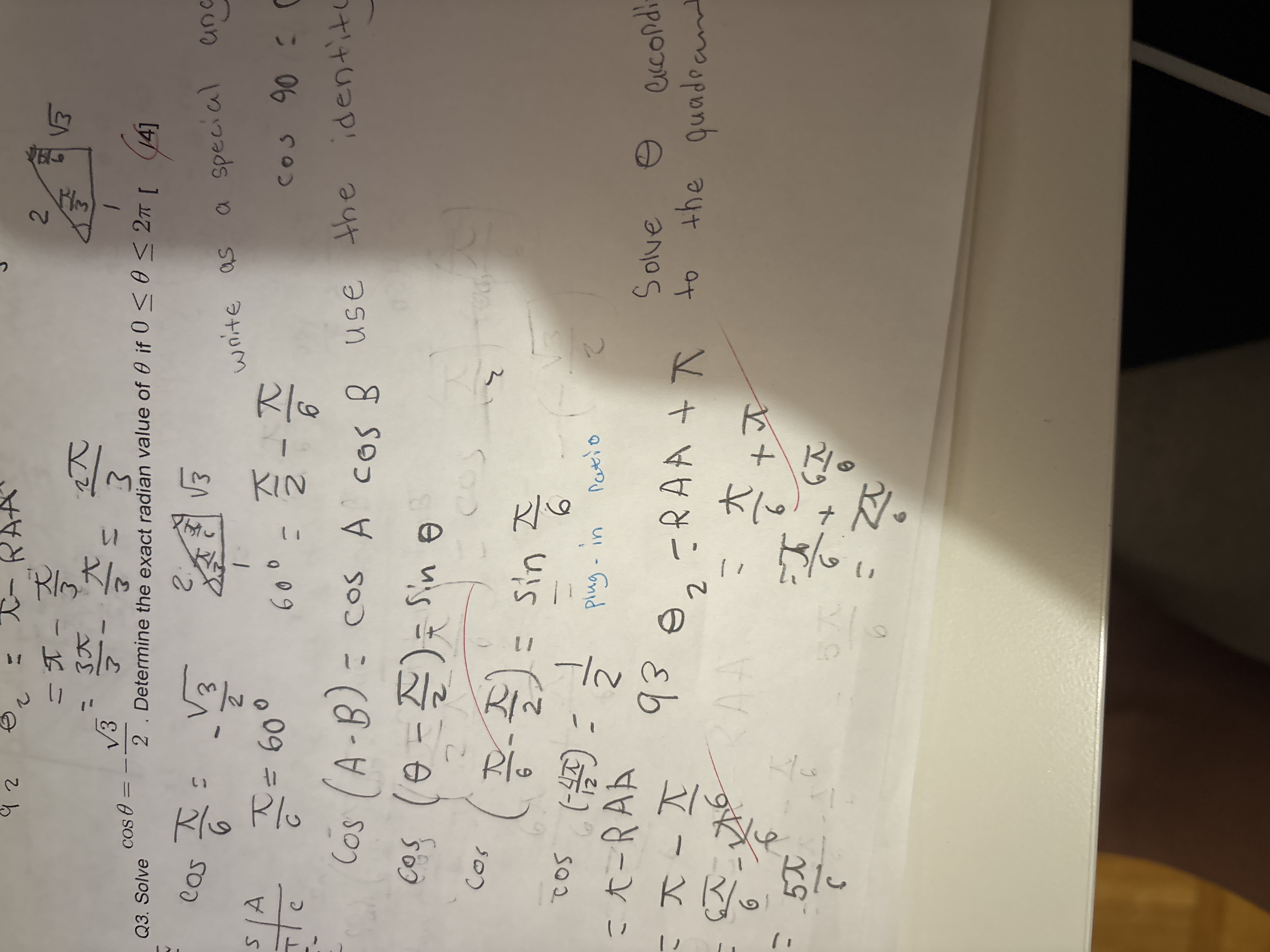Solve cos(θ) = -√3/2. Determine the exact radian value of θ if 0 ≤ θ ≤ 2π.

Understand the Problem
The question is asking to determine the exact radian value of theta (θ) given the cosine function and a specified range. It suggests using trigonometric identities and possibly referencing the unit circle to solve for the angle.
Answer
$ \frac{5\pi}{6} $ and $ \frac{7\pi}{6} $
Answer for screen readers
The exact radian values of $ \theta $ are $ \frac{5\pi}{6} $ and $ \frac{7\pi}{6} $.
Steps to Solve
- Identify the Angle Related to Cosine Value
We know from the unit circle that $ \cos(\theta) = -\frac{\sqrt{3}}{2} $ corresponds to the angles in the second and third quadrants.
- Determine Reference Angle
The reference angle where $ \cos(x) = \frac{\sqrt{3}}{2} $ is known to be $ x = \frac{\pi}{6} $.
- Find Angles in Each Quadrant
Using the reference angle, we can find the angles in the second and third quadrants:
- In the second quadrant: $$ \theta = \pi - \frac{\pi}{6} = \frac{5\pi}{6} $$
- In the third quadrant: $$ \theta = \pi + \frac{\pi}{6} = \frac{7\pi}{6} $$
- List Possible Solutions
Thus, the exact solutions for $ \theta $ in the specified range $ [0, 2\pi] $ are: $$ \theta = \frac{5\pi}{6}, \quad \frac{7\pi}{6} $$
The exact radian values of $ \theta $ are $ \frac{5\pi}{6} $ and $ \frac{7\pi}{6} $.
More Information
These angles represent where the cosine function equals $ -\frac{\sqrt{3}}{2} $, located in the second and third quadrants of the unit circle.
Tips
- Mixing up the quadrants: Ensure you're considering both the second and third quadrants when solving for angles with a negative cosine value.
- Forgetting to find the reference angle can lead to only finding one solution.
AI-generated content may contain errors. Please verify critical information